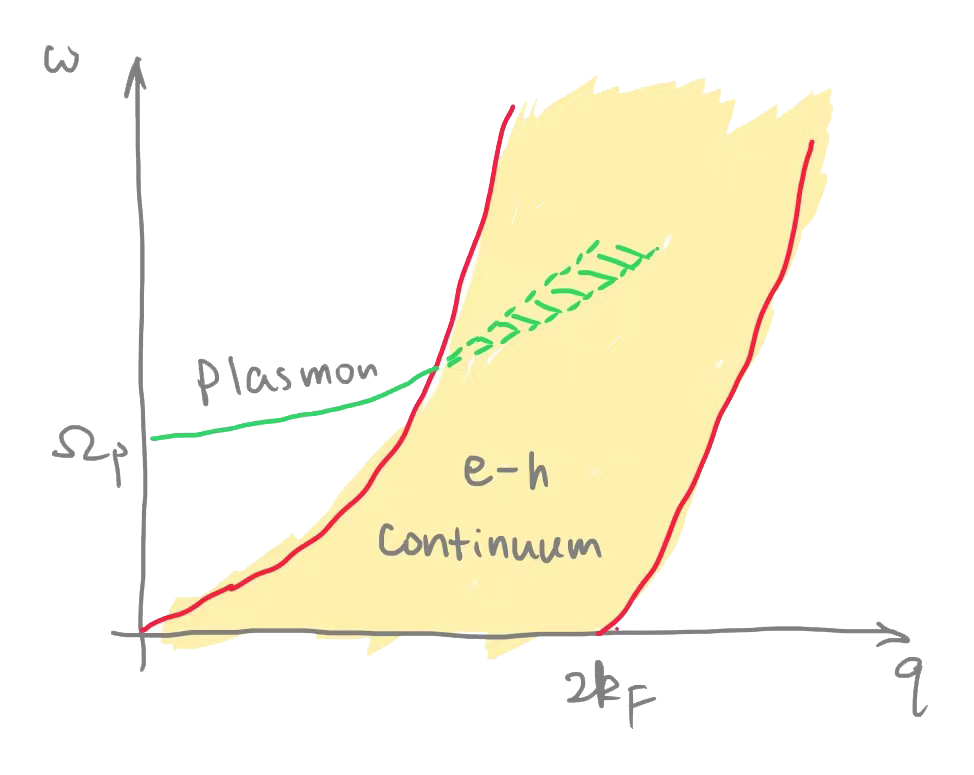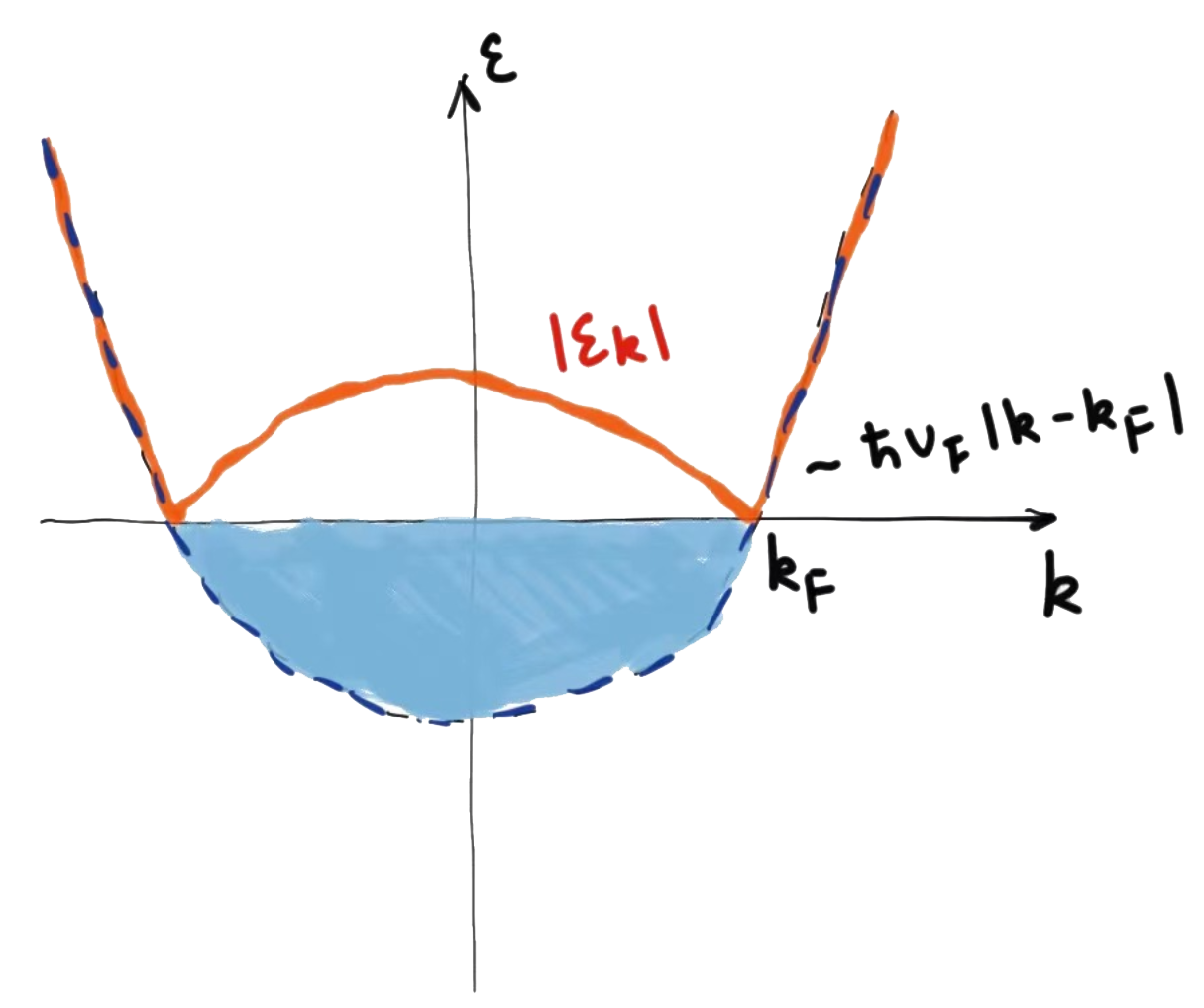Lecture 5
Today
Random-phase approximation
Plasma oscillation, plasmon
Fermi liquid theory
Reading
GY 15.7-15.11.
1. The static Lindhard approximation
The polarization function is approximated as
Then
or
The density response is
where
response like a free electron via
sometimes called the self-consistent static Hartree (no exchange or correlation) approximation.
Again, the screened potential displays Friedel oscillation
This is missed in the Thomas-Fermi approximation.
2. Dynamical screening and random-phase approximation (RPA)
Including all the polarization in the free-electron gas
So the response function in the RPA is
Let's look at the expansion
diagrammatically, this looks like

If we take the expression for
This is the so-called dynamical limit.
The dielectric function in the RPA is
new poles at
Support density oscillation even in the absence of external drive, by virtue of intrinsic excitation of the system.
The fact that these modes show up as poles in

Plasma oscillation, arising from the instability of the density response function, is the uniform density oscillation in a conducting media. The absence of
Then the depolarization field is
so,
From
In order for the dielectric function to vanish, we require
Solving for
quadratic dispersion for small
The appearance of
A plasmon is a quantum of plasma oscillation.
Significant broadening inside the e-h continuum: damping (阻尼).

[I will leave 15.10 Optical properties for self study.]
3. Landau Fermi liquid theory
The
The success of these free-fermion theories is rooted in the Landau's liquid theory, which is based on the assumption of an adiabatic connection between the fully interacting electron liquid and the free fermion limit.
4. Elementary excitations
In the grand canonical ensemble (巨正则系综), the grand Hamiltonian is written
where
For a non-interacting electron gas then
In the ground state,
What can happen to the gas? It can be dislodged into an excited state by
For an occupied state (占据态) (
a single particle excitation (单粒子激发) : occupancy (占据) one state is changed
single-electron excitation outside the Fermi sea
single-hole excitation inside the Fermi sea
In both cases, the energy of excitation is
Near the Fermi energy, we can make the linear expansion

A single-hole or a single hole excitation is called an elementary excitation.
An elementary excitation (元激发) has well-defined energy, momentum and dispersion relation (色散关系), and all excited states of the system can be built from elementary excitations.
So an elementary excitation in this case changes the total particle number. This is why we use grand canonical ensemble.
The simplest excitation in a canonical ensemble (正则系综) is the electron-hole pair excitation, which is not elementary because there is no well-defined dispersion relation (色散关系) as seen from the e-h continuum, and because not all excited states can be built from e-h pairs.
5. Adiabatic connection and quasiparticle concept
The free-fermion system can be solved easily, thanks to the fact that it has a lot of constants of motion:
This existence of a huge number of symmetries is not generic. Interaction usually breaks it,
Let's introduce the interaction to a free-fermion system slowly or adiabatically, with a tuning parameter
Adiabatic connection is assumed. For
Such a singularity would signal an instability of the ground state and should be viewed as a phase transition. Thus, if there are no phase transitions, there should be a smooth connection between noninteracting and interacting ground states.
What about the excited states?
Now consider a single particle excitation at
With interaction, however, this particle can scatter with other particles.
For example,

One can always find
Scattering is inevitable and all these excited states mix.
To identify the interacting excited states with the non-interacting excited states seems hopeless.
Landau argued that although adiabaticity cannot be established for every excited state, it may be established for low-energy excited states at least approximately. The kinematic (动理学) consideration in
we have
This means,
In other words, the phase space (相空间) for the scattering is restricted to a very thin shell close to the Fermi surface, with a thickness
That's is, for sufficiently low-energy excitations,
Then these low-lying single-particle excitations can be good approximations of the exact eigenstates of
Thus